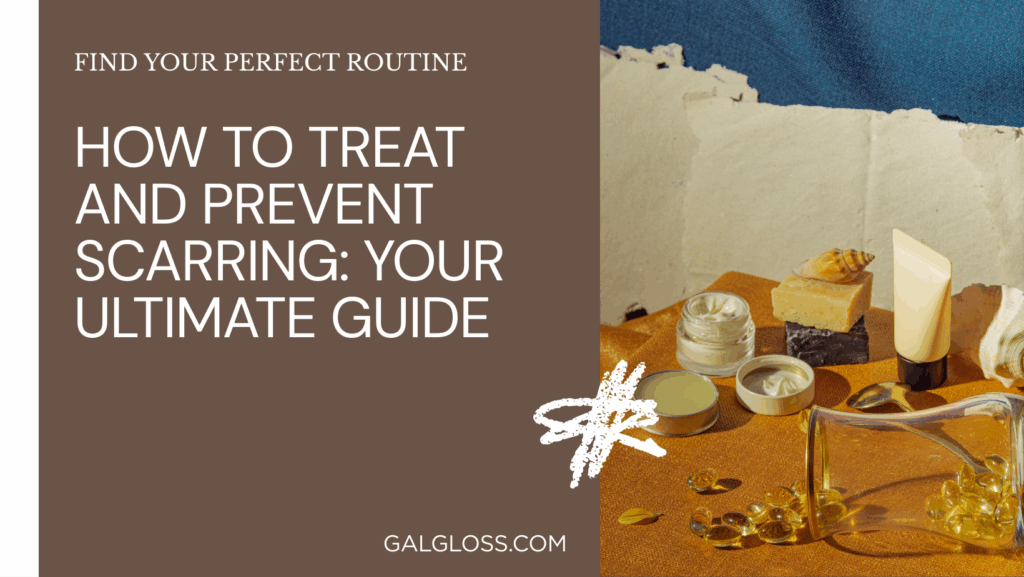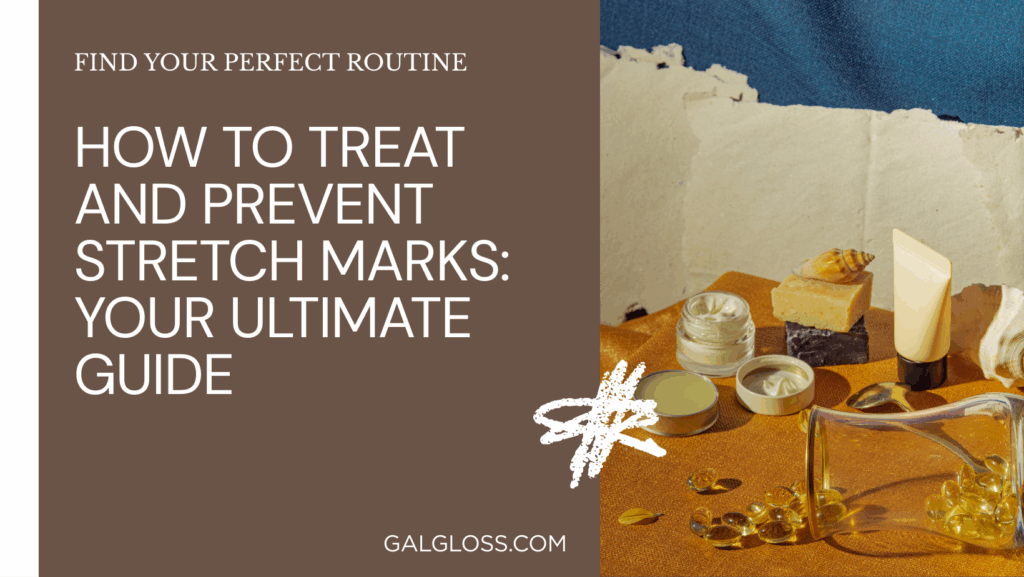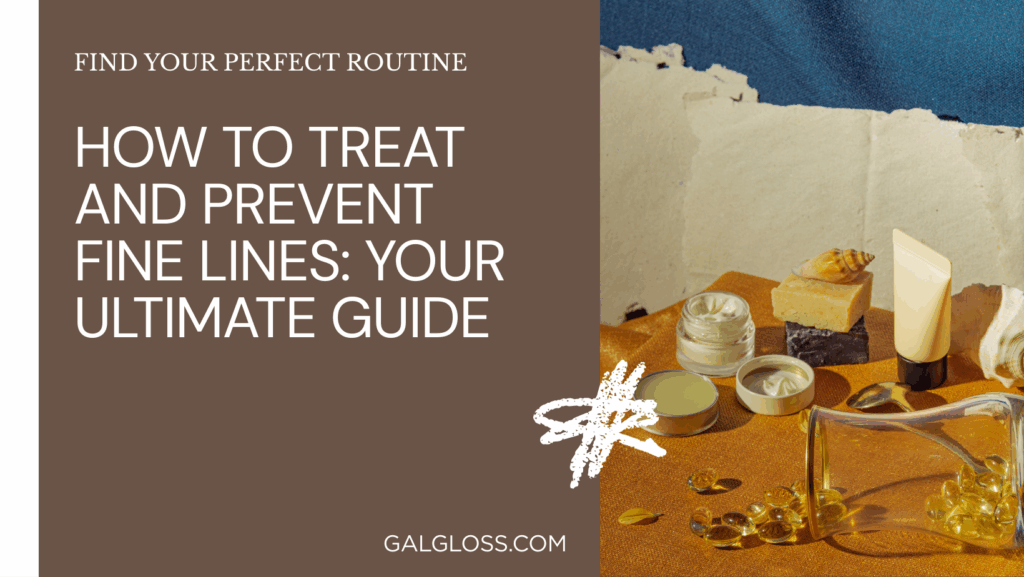Ever looked in the mirror and wished that scar would just disappear? You’re not alone. Scars can be pesky reminders of past injuries or surgeries, affecting our confidence and self-image. But here’s the good news: with the right approach, you can minimize their appearance and even prevent new ones from forming.
In this guide, we’ll dive into everything you need to know about treating and preventing scars. From home remedies to cutting-edge medical treatments, we’ve got you covered. So, ready to say goodbye to those troublesome marks? Let’s get started!
Understanding Scars: What’s Really Going On?

Before we jump into treatments, let’s get to know our enemy. Scars are like your skin’s version of a repair job. When you get a cut, burn, or other injury that goes deep enough to damage the dermis (the layer beneath the surface), your body kicks into healing mode.
Think of it like a construction site. Your body sends in fibroblasts – the workers that produce collagen – to rebuild the damaged area. Sometimes, this process goes a bit overboard, resulting in different types of scars:
- Hypertrophic scars: Raised and red, but stay within the original injury boundaries.
- Keloid scars: The overachievers – they grow beyond the original wound.
- Atrophic scars: These are sunken, often seen with acne.
- Contracture scars: Often from burns, these can tighten the skin and limit movement.
Now that we know what we’re dealing with, let’s look at how to prevent these little troublemakers from forming in the first place.
Scar Prevention: An Ounce of Prevention is Worth a Pound of Cure
Remember that old saying? It’s spot on when it comes to scars. Here’s how to give your skin the best shot at healing without leaving a mark:
- Keep it clean: Wash the wound gently with mild soap and water. Think of it as creating a clean canvas for healing.
- Moist is the way: Contrary to the old “let it air out” advice, keeping a wound moist actually promotes better healing. Use petroleum jelly or a hydrocolloid dressing.
- Silicone is your friend: Once the wound has closed, silicone sheets or gel can work wonders. They’re like a protective shield for your healing skin.
- Sun protection is non-negotiable: UV rays can darken scars, making them more noticeable. Slather on that SPF!
- Feed your skin: Your body needs nutrients to heal. Load up on vitamins C and E, zinc, and protein. It’s like giving your skin the best building materials for repair.
But what if you’re already sporting a scar? Don’t worry, we’ve got solutions for that too!
Home Remedies: Nature’s Scar-Fighting Arsenal
Before you rush to the pharmacy, check your kitchen. You might have some powerful scar-fighters right at home:
- Aloe vera: This green goo is a natural anti-inflammatory. It’s like a soothing balm for your scar.
- Coconut oil: Packed with fatty acids, it moisturizes and may help reduce scar appearance.
- Honey: Not just for your tea! Its antibacterial properties can help with healing.
- Onion extract: Sounds weird, but it’s found in many scar treatments. It may help reduce redness and scar tissue buildup.
- Essential oils: Lavender and rosehip oils have properties that might help with scar healing. Just remember to dilute them!
While these natural remedies can help, sometimes you need a little extra firepower.
Over-the-Counter Scar Treatments: Your Drugstore Arsenal
When home remedies aren’t cutting it, it’s time to hit the pharmacy. Here’s what to look for:
- Silicone-based products: These come as sheets or gels. They’re like a protective barrier that helps hydrate the scar and regulate collagen production.
- Vitamin E creams: This antioxidant may help improve the appearance of scars. Think of it as a superfood for your skin.
- Scar fading creams: Look for ingredients like hydroquinone or kojic acid. They’re like spot treatments for scar discoloration.
- Hydrocolloid dressings: These create a moist environment for healing, like a mini-greenhouse for your scar.
But what if you’ve tried all these and that stubborn scar is still hanging around? It might be time to bring in the big guns.
Medical Treatments: When You Need Professional Help
Sometimes, you need to call in the experts. Here are some treatments your dermatologist or plastic surgeon might recommend:
- Corticosteroid injections: These can help flatten raised scars. It’s like deflating a balloon.
- Laser therapy: Different types of lasers can target various scar issues. Think of it as a high-tech eraser for your skin.
- Microneedling: Tiny needles create micro-injuries that stimulate collagen production. It’s like aerating your lawn, but for your skin.
- Chemical peels: These remove the top layer of skin, encouraging new skin growth. Out with the old, in with the new!
- Dermabrasion: This physically removes the top layers of skin. It’s like sanding down a rough surface.
- Cryotherapy: Freezing the scar tissue can help reduce its size. It’s like putting your scar in the deep freeze!
For severe scars, there are even more advanced options available.
Advanced Scar Revision Techniques: The Heavy Artillery
When standard treatments aren’t enough, these advanced techniques might be the answer:
- Surgical scar revision: Sometimes, the best way to improve a scar is to surgically remove it and re-close the wound.
- Skin grafting: For large scars, healthy skin from another part of the body can be used to cover the area.
- Dermal fillers: These can help plump up sunken scars. It’s like filling in a pothole.
- Platelet-rich plasma therapy: Using your own blood cells to stimulate healing. It’s like giving your skin a super-charged energy drink!
Remember, these treatments should always be performed by a qualified professional. Don’t try this at home, folks!
Lifestyle Factors: Your Daily Habits Matter
Your daily habits can have a big impact on how your skin heals. Here are some tips:
- Quit smoking: Smoking reduces blood flow and oxygen to the skin, hindering healing.
- Stay hydrated: Water is essential for healthy skin. Drink up!
- Get moving: Exercise increases blood flow, which can help with healing.
- Manage stress: High stress levels can impair healing. Try meditation or yoga to keep calm.
When to See a Professional: Don’t Go It Alone
While many scars can be treated at home, some situations call for expert help. See a dermatologist or plastic surgeon if:
- Your scar is painful or itchy
- The scar is restricting movement
- You’re concerned about the appearance of a scar
- Home treatments aren’t working after several months
They can assess your scar and recommend the best treatment plan.
Special Considerations: Not All Scars Are Created Equal
Different types of scars may require different approaches:
- Acne scars: Often respond well to treatments like microneedling or chemical peels.
- Surgical scars: Proper wound care is crucial. Follow your doctor’s post-operative instructions carefully.
- Burn scars: These often require specialized treatment. A burn specialist can provide the best care.
- Stretch marks: While technically not scars, they’re treated similarly. Retinoids and laser therapy can help.
The Psychological Impact: It’s More Than Skin Deep
Let’s face it: scars can affect more than just our appearance. They can impact our self-esteem and confidence. If you’re struggling with the emotional aspects of scarring, don’t hesitate to seek support. A therapist can help you build confidence and self-acceptance.
Remember, scars tell a story. They’re a testament to what you’ve overcome. While it’s okay to want to minimize their appearance, it’s also important to embrace them as part of your journey.
The Future of Scar Treatment: What’s on the Horizon?
The world of scar treatment is always evolving. Researchers are exploring exciting new possibilities:
- Stem cell therapy to regenerate skin
- Gene therapy to control collagen production
- 3D-printed skin grafts
While these treatments are still in development, they offer hope for even better scar management in the future.
Conclusion: Your Path to Healthier Skin
Treating and preventing scars is a journey, not a destination. It takes time, patience, and often a combination of approaches. But with the right strategies, you can minimize the appearance of scars and give your skin the best chance at healing beautifully.
Remember:
- Prevention is key: Proper wound care can stop scars before they start.
- There’s no one-size-fits-all solution: What works for one scar might not work for another.
- Be patient: Healing takes time, and improvement can be gradual.
- Don’t be afraid to seek help: Professionals can offer treatments and advice tailored to your specific needs.
Your skin has an amazing ability to heal. With these tips and treatments, you’re well-equipped to support that healing process and keep your skin looking its best.
So, are you ready to take on those scars? With this guide in your arsenal, you’re all set to start your journey towards smoother, healthier-looking skin. Here’s to your skin’s health and your confidence!





